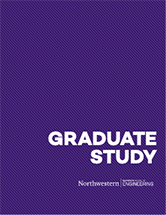Connecting the Dots Between Art History and AI
Theodore Debreu's (MLDS ‘25) journey to the MLDS program and learning about emerging technologies began with a passion for art.
In a bustling Christie’s auction room surrounded by priceless works of art, Theodore Debreu (MLDS '25) found himself not appraising paintings but instead explaining the intricacies of blockchain technology. Though a seemingly unusual place to discuss the advanced information sharing mechanism, for Debreu, it was exactly where he belonged.
Growing up in a French household in Los Angeles, Debreu developed a blend of artistic appreciation and technological curiosity. This dual passion led him to pursue an unconventional combination of undergraduate interests at the University of Chicago: art history and molecular engineering.
 “I decided to make the most of my liberal arts education, choosing to expand my cultural foundation and develop the lens through which I still view the world today,” Debreu said. “I minored in molecular engineering for the opportunity to better understand emerging technologies, take economics electives, and feed my STEM craving.”
“I decided to make the most of my liberal arts education, choosing to expand my cultural foundation and develop the lens through which I still view the world today,” Debreu said. “I minored in molecular engineering for the opportunity to better understand emerging technologies, take economics electives, and feed my STEM craving.”
His love for art history blossomed during a gap year, when he immersed himself in Italian and French paintings. As his studies progressed, so did his interests, eventually leading him to the cutting edge of digital art.
“In my senior year, I focused on animation, film, and what at the time we called post-human art, now broadly known as generative AI,” Debreu said. “After college, my interest in generative AI really took off, especially during the nascent stages of text-to-image stable diffusion models. It was great to see how these tools resonated with a community of artists, sparking creativity and innovation.”
It was after Debreu graduated in 2021 that he discovered blockchain technology and saw its potential as a complement to digital art forms. That insight led him to Christie’s, where he played a key role in developing the emerging non-fungible tokens (NFT) department and became the de facto blockchain guru.
As Debreu's interest in blockchain grew, he worked on various blockchain products for a London-based incubator. After that, he created a successful trading algorithm leveraging Ethereum’s public ledger.
The experiences sparked Debreu’s interest in data science, and that led him to Northwestern Engineering's Master of Science in Machine Learning and Data Science (MLDS) program (formerly the MSiA program). The program's rigorous curriculum and reputation as one of the oldest and most decorated in the country appealed to him.
Debreu is now honing his skills in statistical modeling, data analysis, and deep learning. He remains particularly excited about the potential of generative AI and its consumer applications.
After graduation, Debreu hopes to join a data-science team where he can drive business impact while refining his technical skills. Eventually, he wants to run his own business, using data science as the cornerstone for innovation and growth.
The MLDS program is laying the groundwork for Debreu’s aspirations, equipping him with both technical expertise and practical application skills. As he navigates this new chapter in his professional journey, he carries with him a valuable lesson from his studies.
“Data science is detective work,” Debreu said. “Data can tell many stories, but it's up to you to connect the dots.”

